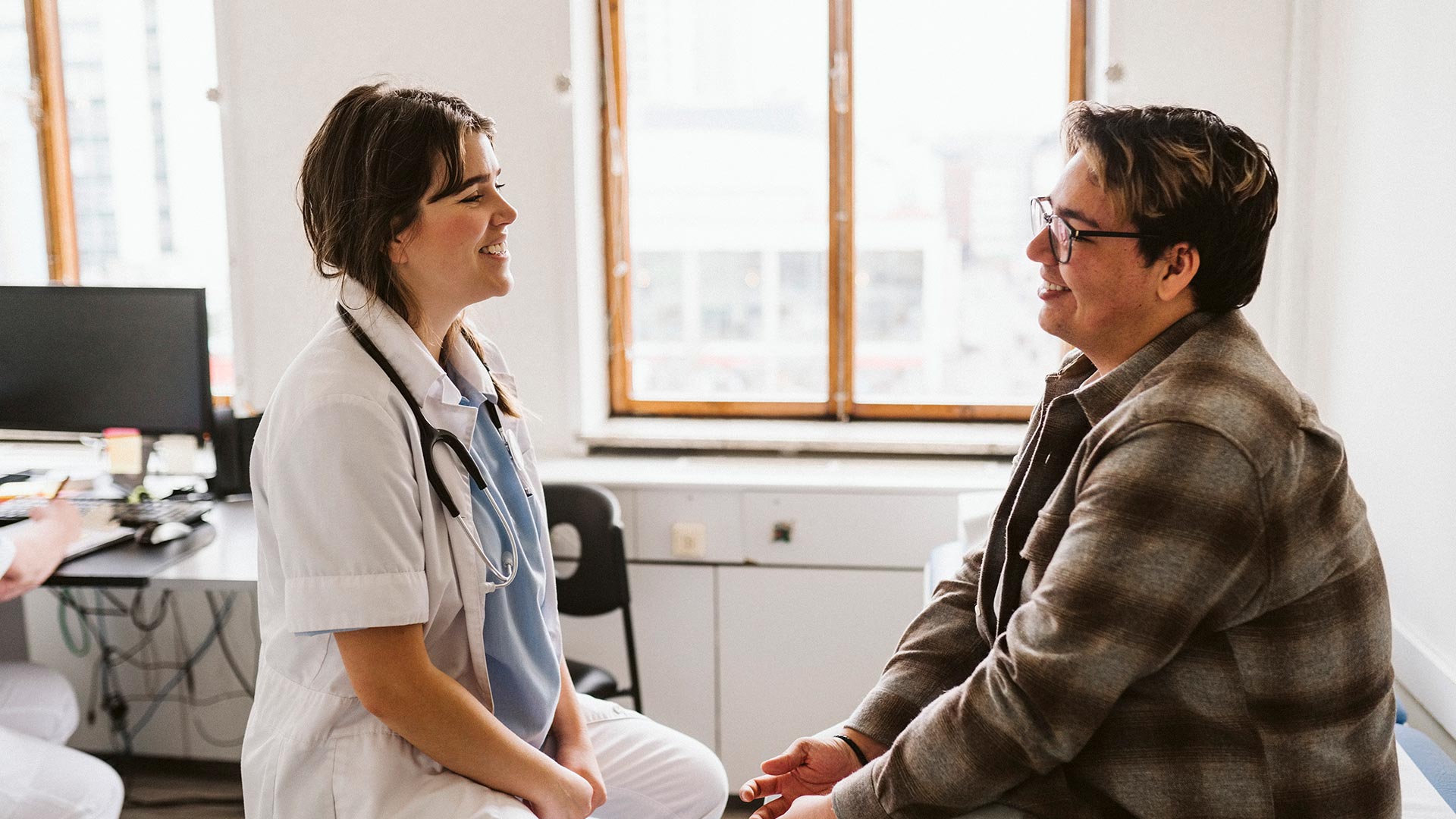
“New Year, New You.” The moment the ball drops in Times Square, this sentiment is reflected in thousands of places. Over the following weeks, people often take stock of changes they might undertake to lead happier, more fulfilling lives in the new year.
For many, the momentum to improve ourselves is expressed in New Year’s Resolutions to be healthier – setting goals to lose weight, give up smoking, exercise more, start meditating and eat better. Along with improving our personal habits, we often pledge to catch up on routine health screenings and preventative care we may have been putting off.
As a physician, I love to see an uptick in people taking better care of themselves.
However, it’s no secret that hospitals and other medical facilities are facing a shortage of doctors, nurses and other skilled healthcare workers.
Those who spent the last three years working double shifts and witnessing illness, grief and growing levels of violence are understandably burned out. Nearly half (42%) of physicians say they’re not only exhausted but struggling to find time to relax and enjoy life.
To be clear, hospitals and surgery centers have stringent standards which they must – and do – follow. In any field, however, overstressed, overworked people are more prone to making errors. Healthcare is no exception.
Medical errors plague the U.S. healthcare system
Medical errors surpass the third leading cause of death in the U.S., accounting for 250,000 deaths per year. That doesn’t include the 12 million diagnostic errors that result in early cancers and heart disease going undiagnosed.
This not only negatively impacts the patient’s prognosis, it also leads to $750 billion in additional annual healthcare costs.
Patient safety has been at the forefront of the collective healthcare mind since 1999 when the Institute of Medicine (IOM) published its landmark report, To Err is Human: Building a Safer Health System. Despite two decades of initiatives focused on improving the safety of our healthcare system, however, medical errors remain a significant problem.
As recently as 2022, just one-third of U.S. hospitals earned an “A” for patient safety .
Electronic health records (EHR) are helpful in reducing medical errors. Yet, due to design, the cost of platform features and multiple electronic health record systems holding fragmented data, we continue to see errors.
In one study, 33% of EHR’s failed to detect medication errors. Another issue is the lack of interoperability, where information should transfer seamlessly between EHRs, which can further compound the problem. The government has placed focus on this, as part of the CMS interoperability program.
For example, where there are transitions of care between hospital to home, or office to the emergency department, or even between healthcare facilities, there is a potential information gap during the transfer. This drop in signal has the potential to lead to medical errors and some cases lead to a visit to the emergency room or readmission to the hospital.
This year, the healthcare system is stretched thinner than usual as a result of the “tripledemic” of COVID-19, influenza and RSV.
Already, reports are surfacing of avoidable tragedies that occurred as a direct result of clinician shortages and burnout. At Mount Sinai Hospital in New York City, the tragic death of a four-month-old baby is being blamed on untrained fill-in nurses and overwhelmed doctors who failed to notice the baby's low blood count for hours. The highly trained NICU nurses who would normally be tasked with caring for such a fragile patient were on strike, due to understaffing

According to a recent New England Journal of Medicine article authored by the Centers for Disease Control and Prevention, as well as the Centers for Medicare & Medicaid Services leadership, provider burnout and shortages that emerged during the pandemic reversed years of patient safety progress.
In particular, three types of healthcare-acquired infections – central line-associated bloodstream infection, catheter-associated urinary tract infection, and methicillin-resistant Staphylococcus aureus – worsened by a statistically significant amount.
National patient safety measures evolving to include health equity
Recently, The Joint Commission (TJC), one of the leading accrediting organizations of healthcare entities, updated standards, elevating health equity to a National Patient Safety Goal.
Just as incidents like falls and medication errors are examined for their root causes, so too, should individuals’ healthcare disparities. Facilities need standardized processes to detect and address inequities, and established leadership to steward these practices.
The Joint Commission also seeks to recognize organizations that invest in their health equity infrastructure with the new Healthcare Equity certification program. This program highlights hospitals that strive for excellence to provide equitable care, treatment and services.

An annual push to improve patient safety
Each March, the Institute for Healthcare Improvement (IHI) sponsors an annual recognition event to raise awareness, promote discussion, and inspire action to improve safety in the healthcare system.
This year’s Patient Safety Awareness Week (March 12 to 18) poses a particular opportunity for hospitals, clinicians and facilities to rededicate themselves to improving patient safety as we reflect on the immense challenges and stresses of the pandemic.
With a new recognition of, and appreciation for, clinician burnout and health equity’s role in driving safety and outcomes, healthcare organizations are tasked with supporting their clinicians and improving patient safety in the process.
It's also an opportunity for patients to understand they have a voice in improving the safety of their own healthcare journey.
All too often, patients assume they are at the mercy of the healthcare system, but there are steps they can take to be their own advocates when it comes to the safety of their healthcare experience.
It’s more than just healthcare providers who have a role to play
Healthcare literacy plays a huge role in enabling patients to gather the information they need to understand their diagnosis and treatment.
For patients, being in the moment with a physician can be a stressful, intimidating experience. In fact, a recent survey showed 66% leave a physician’s office having forgotten to ask questions. Fortunately, there are steps patients can take to improve the experience:
- Make a list of questions in advance or bring a family member or caregiver to serve as a second set of eyes and ears.
- Clarify what was covered and convey any follow-up questions via their electronic health record (EHR) after the visit.
- Familiarize themselves with advocacy channels where they can direct any concerns or complaints, including around healthcare equity or discrimination.
Members of some marginalized groups, such as LGBTQ+ individuals, may also feel anxious about how they are treated in a healthcare setting, which can negatively impact their visit. Therefore, it’s crucial they be made aware of opportunities to air their concerns or complaints in order to ensure a safe, positive experience.
Some medical schools are also putting patient safety in the forefront. Rather than waiting until students are in practice or later in their careers to be certified, three prominent medical schools, Texas College of Osteopathic Medicine, Ohio State University College of Medicine and The University of Michigan Medical School, are all including patient safety coursework in their programs.
This may come as a surprise to some, but schools looking to introduce safety curricula face barriers to adoption. These include student disinterest and uneven support internally for devoting resources to these initiatives. However, we should continue to encourage these efforts if we want to change the way healthcare is delivered in this country and address preventable deaths from errors.
Finally, employers have a unique opportunity to empower their people in care settings through:
- Caregiver support
- Healthcare navigation services
- Clinical guidance services
- Social Determinants of Health (SDOH) assessments
- Other wellbeing benefits that may bridge the gap

Alight’s Healthcare Navigation solutions support patient safety in both healthcare settings and in the moments in-between. This includes preparing participants for upcoming appointments, helping improve their healthcare literacy and aiding with medical decision support prior to, during and after a clinical event.
Our provider search tool, SmartSelect MD, is particularly well-suited to identify providers and facilities that deliver high-quality care and positive outcomes for participants.
For those employees who need to take a leave of absence for their health, Alight’s acquisition of ReedGroup enables us to provide them with the right kind of leave and ensure they return to work at the appropriate time. Should they need accommodations at work due to a health condition or disability, we’ll be able to make sure they get support.
Improving patient safety is a major concern for clinicians, healthcare facilities, insurers, employers and individuals. Granted, there is no easy answer to the serious issues that underlie the topic. But by working together, we have the ability to raise awareness and engage in critical conversations to improve the experience for everyone.


